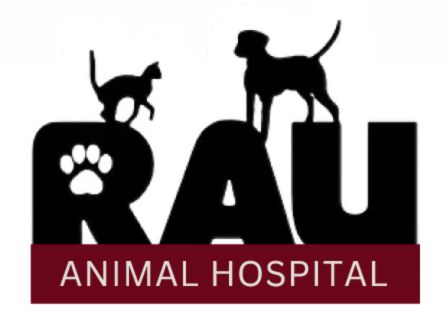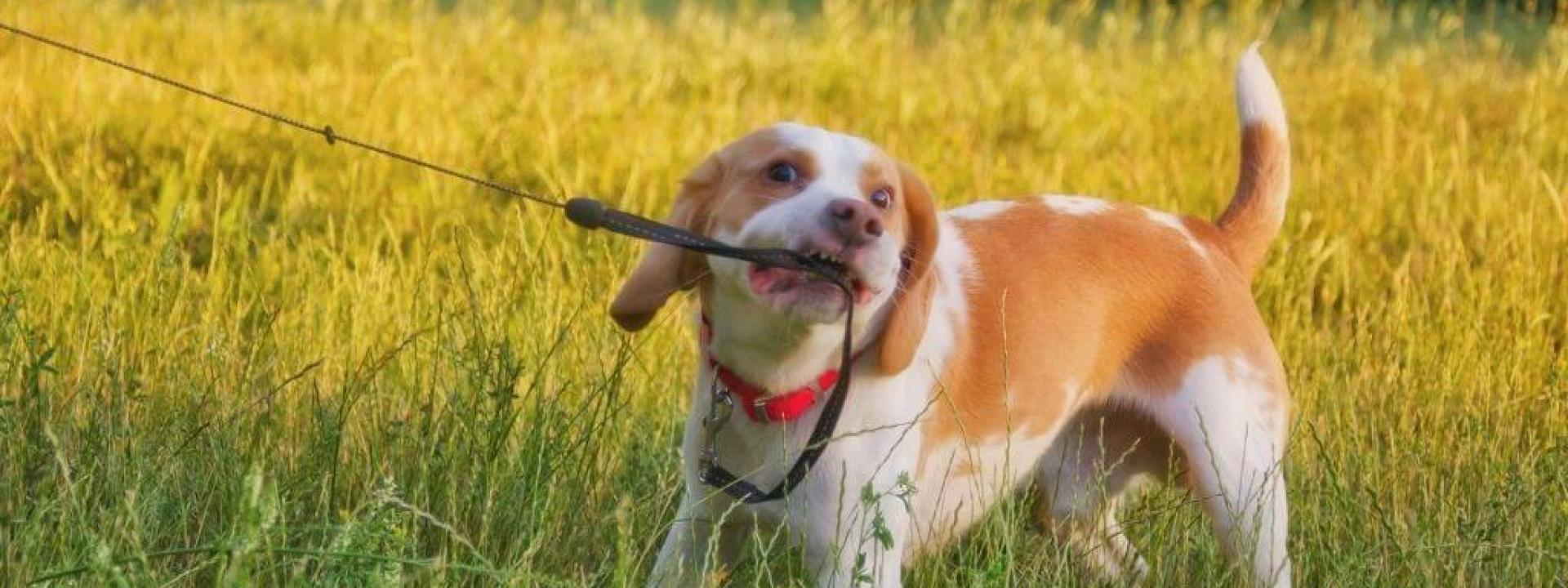From puppy breath and snuggle seshes to silly selfies and watching them fall asleep right in their food bowls, puppies are, quite frankly, perfection. As veterinarians, however, we always want to make sure that anyone considering taking the puppy plunge understands that, along with all of the good stuff, taking care of puppies can be a lot of work. Not only that, but they are itty bitty balls of energy that require a lot of time and dedication.
It’s not that we don’t want you to enjoy your PuppyPalooza, but we hate when we see them get rehomed for being, well, puppies. But if you’re new to the game, you might not know what’s normal puppy behavior and what’s not. Along with a discussion on that below, we’ll share five puppy behaviors you want to nip in the bud...for your sake and your bitty ball of fur, too!
How can I tell if my puppy has behavior issues?
Your expectations and lifestyle define behavior issues. A behavior that is a problem in one household - such as getting on the furniture - may be welcomed in another. If your pup is practicing behavior that is not ideal in your circumstance, find a way to redirect that energy or reinforce an alternative behavior. Reach out to your veterinarian for help with this.
How much puppy biting is considered normal?
Mouthing and nipping behavior is normal in all puppies….so is peeing wherever they want, unfortunately! The critical question is, what do you want to consider normal in your household? In most situations, we want essentially no mouthing or nipping behavior long-term. The management of the mouthing habit in puppies is vital to a healthy relationship long-term and may be a matter of life and death in some dogs’ lives. Teaching a puppy bite inhibition (or having a soft mouth) is relatively straightforward in most situations. Many veterinarians have helpful handouts on this with guidelines on this process, so be sure to ask.
Why is teaching your puppy how to have a soft mouth so important?
Any dog has the potential to bite in certain situations; for example, if their tail gets closed in the door, if they have an injury out in the woods, or they get startled by a toddler. If a dog has learned bite inhibition as a puppy, they instinctively know how to “pull their punches.” Dogs with good bite inhibition will cause less damage in situations where they reflexively bite.
This bite inhibition is important from a human safety standpoint, but it can become a crucial factor if the dog needs to be rehomed at some point in life. The idea of rehoming your precious pup may be unthinkable right now, but sometimes life changes. A very happy dog with a quiet couple may not adjust well if a baby comes along. We need to set our dogs up for success as much as possible. Dogs that have poor bite inhibition will cause much more severe bites when scared or injured. A serious bite history can be a death sentence for a dog in rescue. It may seem silly to worry about those puppy nibbles, but having a soft mouth is a lesson every puppy needs!
Do all puppies have what’s considered to be a rebellious phase?
The adolescent phase can be a trial in just about any species. This is true for dogs as well. The adolescent phase starts around six months and can last until 2-3 years of age in some dogs. Dog adolescence is a time of testing boundaries, lots of hormonal changes, and often a bit of fear. This mix can lead to many challenges with training and behavior. Surviving the adolescent phase without too much stress can be done with a good training routine, a lot of enrichment, and patience.
How should I discipline my puppy for behaviors that I don’t want to continue?
Discipline or punishment is NEVER the answer. We need to cue and reinforce the behaviors we WANT to see in our pups. Dogs only continue behaviors that work. If we stop (inadvertently, in most cases) reinforcing unwanted behaviors, they will cease eventually. By redirecting to and reinforcing behaviors we want, this extinction of unwanted behaviors will often go away more quickly.
5 Puppy Behaviors to Nip in the Bud
“Good” versus “bad” dog behaviors are a bit of a gray area because, as we mentioned earlier, some behaviors are acceptable in certain families while others are not. There are some puppy behaviors that can be downright dangerous, however, and those are the ones that we want to nip in the bud. Perspectives on this may vary depending on the size and the breed of your puppy.
1. Jumping
Why do puppies and dogs jump on us? In most cases, they want attention and interaction. When we push them away or tell them “No” or “Off”, we’re fulfilling those desires, whether we like it or not. If we want to stop the jumping, we need to give them an alternative. Teach a default sit. This is a foundational behavior that has a million uses - this is just one of them.
When your pup jumps - ignore them. Turn your face or even your whole body away and stay silent until they have all four feet on the floor or even sit. In many cases, a dog with a default sit cue will eventually sit in an attempt to get attention. The MOMENT those feet or the bum hit the ground and stay there for more than a second or so, reinforce!!! (This is why we always need cookies in our pockets.) It’s not going to be pretty or perfect, but in many cases, this is all it takes. Don’t allow your dog to jump up on others, even if they say it is OK. Ask them to turn to the side and ignore the dog. For dogs with a longstanding jumping problem or those that are a bit more stubborn, additional steps may be helpful. Just check in with us or your trainer for some other techniques to build the habit you want. And remember: Punishment never works long-term and will damage your relationship with your pup!
2. Poor Leash Manners
Poor leash manners isn’t a life or death situation, per se, but it can actually be dangerous if your puppy grows into a huge dog and you’re just a tiny human! In general, having an impolite walker is more of a nuisance but, as you can imagine, as dogs get big, bigger, and possibly biggest, this could make for a perilous circumstance if your dog pulls you or, worse, gets off-leash to pursue another dog or a squirrel. Having good leash manners will also help if you are out to keep your dog from jumping up on others. Have your dog sit, you can even step on the leash to keep your dog from jumping up, this will keep them in place for you to either get in front of them to get their attention or to free up your hand so you can have treats ready.
3. Nipping/Mouthing
We’ve covered a bit of this in other topics, but the most dangerous behaviors in puppies are those that can or will affect your relationship long-term, if left unmanaged. The biggest of those would be nipping/mouthing behavior. Early management and intervention is the best thing we can do with any behavior concern. You absolutely cannot check-in enough. Please let us help with anything that comes up!
4. Guarding Behavior
It’s important to understand the difference between guarding and aggression. Guarding is when your dog feels the need to hide or protect what they have, the most common of which are toys and food. They may growl when a person or another pet is near. If left unchecked your dog could develop aggression (lunging and biting) and that is a lot harder to overcome, as it will take professional guidance and a lot of patience.
Avoid tug-o-war with dogs that have guarding behaviors. Have a lot of toys and treats when you are first working with them on guarding. They need to feel comfortable that you won’t take away their toys, and if you do, they need to know that they will get them back. Start off by having the toys close to you, try to stay in the same place, and move slowly. When they drop the toy, give them another toy or a treat, and then give them the toy back. Keep repeating with different toys until your dog becomes comfortable.
If you have another dog in the home, keep the other dog away as you are working with them one on one. Reward your dog when they are allowing the other dog to chew on a toy by either giving them rubs or yummy treats. The message is that they receive good things when their furry sibling is enjoying time with a toy. This is a similar technique to food guarding as well. You can feed them straight from your hand or place handfuls of food in the bowl once they finish and back away, have them wait, and add more food. Having them wait for your OK or release to eat teaches them good manners. If you ever suspect your dog has aggressive behavior, speak to your veterinarian about ways that they can help.
5. Barking
Dogs communicate with you by barking, and letting your puppy know that you are listening is an important part of training and behavior. Letting them know when to be quiet is also part of being a well-behaved dog. This doesn’t mean that you should never let your dog bark, but they should know when it is OK to bark and when it isn’t. Just like with kids, if you let them get away with it, they will continue to do it. You may become immune to the barking but this could be an issue down the road with family, friends, or neighbors.
How soon should I get my puppy into behavior training?
Behavior training such as basic obedience (sit, down, stay) is vital to developing a good line of communication for your puppy, as well as setting clear expectations. Behavior training should start as soon as your pup settles in at home. The much more important aspect of most early training programs is socialization. Any good puppy class will focus most of their time on environmental socialization. Training will also help you and your puppy bond.
The socialization period in puppies lasts from about 3 weeks to 3 months of age. This period is vital for creating a well-rounded and resilient dog. This means that early environmental socialization should be starting while the pup is still with their breeder or foster parent. Early socialization can take place in the form of noises, smells, and textures as well as gentle handling intended to produce very low levels of stress to the pup to help them develop healthy coping mechanisms. As puppies grow and begin entering their adoptive homes, it’s still important to continue this socialization. 70-80% of socialization should be environmental. That means that you should not spend most of your time introducing your pup to other dogs and people. Focus on the world and all the noise, texture, and movement that takes place there. Your payback will be a less fearful, more resilient pup!
The only things most veterinarians would consider truly abnormal behaviors are extreme fear and/or anxiety, signs of aggression (not just playing), or anything that may indicate a medical issue in your puppy such as lethargy, inappetence, circling behavior, pressing their head against a wall, or any sort of vomiting or diarrhea. There’s no way we could list every possible sign of a problem, so never hesitate to call your vet if you have concerns. We’d rather hear from you frequently than have you wait too long when something’s wrong!

